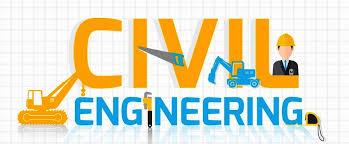To Bridge or Not To Bridge - Sabeeh A. & Eyob B
Grade 8
Presentation
Hypothesis
We believe that the suspension bridge could tend to be the best frame because of its suspended weight. The reason we believe this is because of its towers, which would support heavy amount of loads. Its towers could support a lot of weight (load). As it doesn’t exceed the weight cap.
Research
- Suspension
- Suspension bridges use the force of tension to hold lots of load.
- The tension forces help pull and hold the bridge up, keeping it sturdy.
- The cable is attached to the tower letting it hold a tremendous amount of weight.
- Suspension bridges are mainly used for their support, with their pillars supporting lots of load (weight)
- Can cost up to $1B which can be a huge budget margin for bridges.
- Can span across wide channels.
- Truss
- Uses compression force to equally reverse the force that was applied to it.
- In triangle-shaped triangles can be distorted by stress.
- Distributes the stress to help support the weight.
- Truss bridges are extremely strong and stiff and with their triangle support structures, help distribute weight throughout the bridge, without leaving more weight in a specific area.
- Don’t span as long as a suspension, but can reach a decent distance.
- Truss isn’t as costly but can tend to be pretty tedious, which doesn’t make it any different from any other bridge.
Variables
Independent Variable:
The thing that will change in our experiment will be the type of bridge we are using/testing.
Controlled Variable:
The load of the weights (1kg weights) and material we use to make the bridge.
Dependent Variable:
We are measuring which frame looks the most sturdy, placing 1 kg weights, from 10 g to 500 g.
Procedure
Step-by-Step Procedure
1. Create a blueprint on how we are going to construct the bridge.
2. Make sure we have enough materials and that they are working properly.
3. Plan the bridge frames and how they will be constructed
4. Create the bridge frames singularly (separate from the bridge)
5. Make the bridge so that we can attach the frame.
6. Attach bridge frames on identical bridges (w/ hot glue)
7. Place weights to test out which bridge frame is more sturdy.
Observations
- Truss passed the load capacity test with no bends and could exceed the limit.
- Suspension also passed the load capacity test but with slight bend and if more weight was applied it would collapse
Analysis
The data we collected throughout the experiment was done through research and experimental ways. This was because we compared data between the Suspension and the truss bridge, and some of the components we were comparing them to weren't experimental, however the load capacity was experimental, where we found that the truss bridge was more stiff and controlled the weight held on it, and because of its short span allowed it to easily distribute the weight throughout the bridge. This was most likely due to the fact that the triangles were able to support one another, not causing it to snap like a regular material. This allowed them to combine forces and let them hold massive capacities of weight
Conclusion
- The Truss bridge seems to be better at handling and controlling the weight held.
- The suspension struggled and had bends when weight was placed on it.
- The hypothesis turned out fairly wrong, with our guess being the suspension, and the better bridge frame being the truss.
- The most probable reason it could handle more weight is because of the shape design (triangle).
- Triangles are the strongest and most durable shape out of every other single shape there is, this is because when the force is applied to a corner of the 3 vertices of a triangle.
- It will then be able to evenly distribute the weight in the triangle. But since there is multiple triangles, then that will only increase the support.
Application
Sources Of Error
- Not using proper measurements.
- Not having enough materials.
- Not using our time properly.
- Not being careful when building bridge.
Citations
https://byjus.com/physics/tension-force/
https://wsdot.wa.gov/tnbhistory/suspension-bridges.htm
https://www.tn.gov/tdot/structures-/historic-bridges/what-is-a-truss-bridge.html
https://www.tekscan.com/blog/pressure-mapping/what-compression-force
https://www.sciencedirect.com/topics/engineering/suspension-bridges
https://dozr.com/blog/suspension-bridges
https://www.britannica.com/technology/suspension-bridge
Acknowledgement
My sincere gratitude to these people I am about to name:
Many thanks to Mr.Rip for breaking down our project step by step to make it easier to apply information to our tri-fold, ensuring we did it properly and with minimal errors, and for the important feedback he gave us to improve our work. Also, many thanks to Mr.Klassen for helping manage our School Science Fair to keep it running smoothly and steadily. Lastly, thank you to my partner's parents for supporting us, buying the needed materials, and driving us to places like the library.

